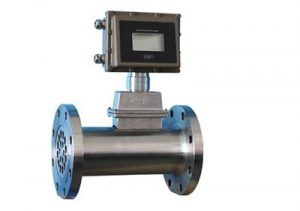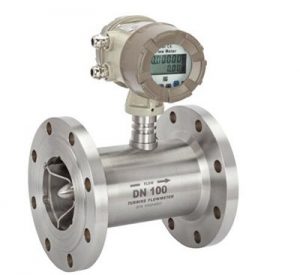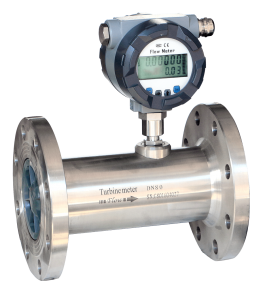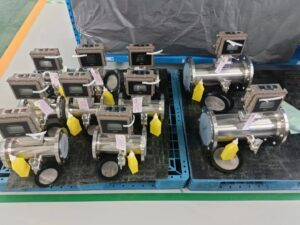The liquid measured by the turbine flowmeter is generally a low-viscosity (generally less than 15×10-6m2/s), low-corrosive liquid. Although there are turbine flowmeters for various media measurements, the measurement of high temperature, high viscosity, and strong corrosive media still needs careful consideration and corresponding measures.
When the medium viscosity v is greater than 15×10-6m2/s, the meter coefficient of the flowmeter must be calibrated with real liquid, otherwise, a larger error will occur.
The vapor-liquid two-phase flow, gas-solid two-phase flow, and liquid-solid two-phase flow cannot be measured with a turbine flowmeter.
Liquid turbine flowmeters have high working pressure and are generally suitable for flow detection of various high and low-pressure water machine systems.
There are also flow meters with a high working pressure of 50MPa, which are mainly used to measure the water injection volume of oilfield water injection systems.
The liquid turbine flowmeter can adopt a full hard alloy (tungsten carbide) shielded cantilever beam structure bearing, which integrates a rotating bearing and a pressure bearing, which greatly improves the bearing life and can work in a medium with a small amount of sand and dirt.
Liquid turbine flowmeter adopts 1Cr18Ni9Ti all stainless steel structure (turbine adopts 2Cr13) to improve anti-corrosion performance
Permanent magnet alloy is used as a signal detector, with a strong output signal and good magnetic stability. The temperature range is wide, and it can work normally in the range of (0~120)℃.
Turbine flow meters are equipped with movable parts and friction parts that rotate at high speeds, such as rotors and bearings. If a turbine flowmeter is used to measure cryogenic fluids (referring to fluids with a boiling point below -50°C under atmospheric pressure, representative cryogenic fluids include LNG, liquefied natural gas, liquid nitrogen, liquid oxygen, liquefied ethylene, liquid hydrogen, etc.), cryogenic materials are required SUS304L, if it can be austenitized, SUS304 material can also be used.
The bearing is the most important part of the turbine flowmeter, and the bearing determines its characteristics and durability. If the measured fluid is a liquid without lubricity, pay great attention to the selection of bearings, such as AISI440C stainless steel ball bearings.
When using a turbine flowmeter to measure cryogenic fluids, the most prone failure is the rapid evaporation caused by the pressure loss of the meter. After causing rapid evaporation, the rotor will rotate at a speed several times faster than the usual speed, so the bearing will be completely worn out in a short time.
The best way to prevent rapid evaporation is based on the theory of fluid mechanics to guide the appropriate increase in the size of the meter. The pressure loss is proportional to the square of the flow rate. If the maximum flow rate to be measured can be limited to 1/2 of the meter range, the pressure loss can be reduced to 1/4 of the rated value.




